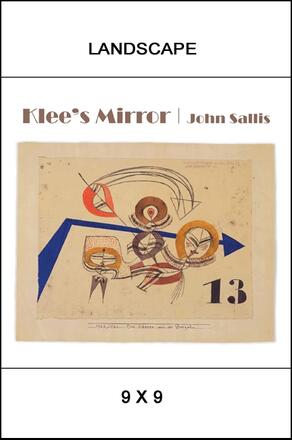
A philosophical perspective on the relation between Paul Klee’s art and his thought.
Description
The artist Paul Klee once said that "art does not reproduce the visible but makes visible. " In Klee's Mirror John Sallis examines the various ways in which Klee's art makes visible things that ordinarily go unseen. He shows how Klee's art is like a mirror capable of reflecting not only the surface appearance of things, but also their hidden depth and the cosmic setting to which they belong. Tracing the relation of Klee's paintings and drawings to music, poetry, and philosophy, Sallis also takes account of Klee's own extensive writings, both theoretical and autobiographical, and of the incisive lectures that he presented while teaching at the Bauhaus. Featuring large, high-quality reproductions, Klee's Mirror shows how the painter's theories both are exemplified in his art and, in turn, are enhanced and extended by what his art achieves and reveals.
John Sallis is Frederick J. Adelmann Professor of Philosophy at Boston College. He has written many books, including The Gathering of Reason: Second Edition; Platonic Legacies; and Double Truth, all published by SUNY Press.
Reviews
"Klee's Mirror is a masterful interpretation of one of the most inspiring artists in the Western tradition, one that will surely capture the interest of philosophers, art history scholars, as well as students and lovers of Paul Klee's works. " — Alejandro A. Vallega, author of Sense and Finitude: Encounters at the Limits of Language, Art, and the Political
"Paul Klee mused in his diary that his art was a kind of mirror whose aim was not 'to reflect the surface' but rather 'to penetrate inside' such that, for example, his 'human faces are truer than the real ones. ' In his exquisite new study, Sallis takes up the complex question of Klee's mysterious mirrors. On the one hand, Klee's works themselves are mirrors of truth, making visible, Sallis tells us, 'what otherwise remains invisible,' reflecting 'what lies beyond the visible surface of things. ' On the other hand, Klee's own theoretical writings are extraordinarily articulate and they uniquely mirror his artistic work. Klee's paintings are not, however, illustrations or representations of Klee's ideas. The mirror of Klee's painting demands a new kind of reflective writing. Finally, there is the mirror of Sallis' own work, deftly navigating between Klee's brilliant double mirror play, producing in turn a startlingly and innovative mode of writing that twists free of the dualism of sensibility and intelligibility. " — Jason M. Wirth, author of The Conspiracy of Life: Meditations on Schelling and His Time